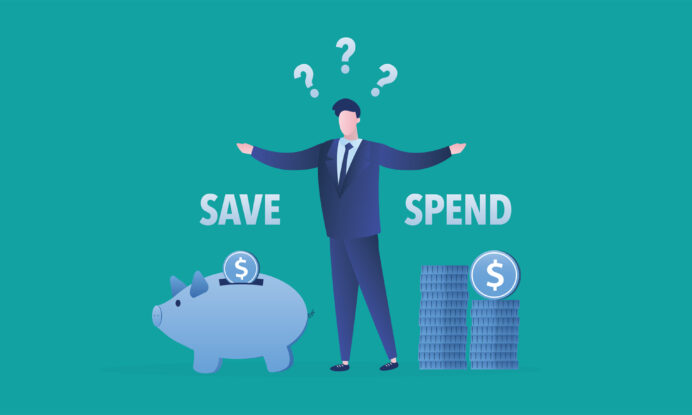
Deep Research Insights

The choices a company makes when it comes to allocating its resources not only impact the firm’s value, but may even put its survival at risk. The following insight dives deeper into the options management has in allocating capital, and outlines what our preferences are.
A company is, at its core, a group of individuals that thanks to a wide array of skills and capabilities are able to generate greater value together than if they were to operate on their own. If profitable, such value generation can translate into surplus cash. We define surplus cash as the money the company earns beyond what it needs to sustain its current operation. This surplus cash can be used freely and in a variety of ways. Some of those ways further enhance the company value while others actually lower it. In this insight, we examine the different options a company has to use its surplus money and how those options may either further increase the value of the company or destroy it.
Let’s start with an overview of options that management is facing once a business reaches profitability. We are writing this insight under the assumption that profitability is only reached after paying fair salaries and initiatives such as waste reduction, quality improvement, good customer service or general improvement of daily operations are already budgeted for. In other words, this is no longer a start-up. Surplus cash is therefore truly extra cash that is not necessarily needed to run the company.
Management can choose to utilize these extra resources to further grow the business, which might make sense in a market where scale matters. It could employ its extra capital to increase its production capacity, to open new stores, or – as we see often in the information technology industry – to acquire another firm in pursuit of synergies, patents or technology knowhow. A second option might be to devote its surplus cash to lower the debt burden the company is carrying. By lowering its debt, the company reduces its dependency on banks and the capital markets as a whole. As a third option, a firm could decide to give back some of the earnings to its shareholders. The two conventional methods used to return capital to the owners are paying a dividend and buying back its own shares.
Lastly, the company may opt to simply retain the surplus cash on its balance sheet as a fourth option. These choices are not mutually exclusive and indeed most companies choose some combination of them. How to allocate cash among these choices is a crucial task that management is facing. In academics, this is called the pay-out puzzle.
1. Re-invest into the business
2. Pay down debt and lower dependency on capital markets
3. Give to owners through share buy backs and/or dividends
4. Keep within the company
Let’s start from Option 4. One reason for a company to simply keep a healthy amount of cash on its balance sheet is that it provides one of the best protections against an uncertain future. Just think back to 2019. Would you have seen the Corona pandemic coming? The COVID-19 pandemic has reminded us that we can model a number of different future scenarios, but the only sure development will be that our predictions will be wrong. In face of such uncertainty, companies need to maintain a conservative capital structure, which provides them with time to react, independence from the capital market and keep all their options open.
The value of a surplus cash-based safety buffer is difficult to compute quantitatively, however, it is easier to understand conceptually, as briefly shown by the following example.
In reaction to COVID-19, companies without a proper capital cushion were forced into reducing costs wherever possible. As a result, a number of companies heavily decreased their marketing spending or scratched their marketing budget entirely in an effort to lower expenses. Consequently, Cost Per Mille (“CPM”), the standard metric used in advertising reflecting the price to get a certain advertisement one thousand views or impressions, decreased rapidly. In July 2020 the cost of advertising on television in the UK decreased by roughly 50 % compared to the year before. In other words: companies could get the same reach at half the price. For companies enjoying the freedom of sufficient cash provision, this presented an opportunity. If a company already had a comfortable cash cushion to consider itself on the safe side even in light of all the uncertainty that the pandemic brought, management could decide to keep the marketing spending going. The company could then acquire unusually cheap advertising space, which led to higher exposure to the public for the same amount of money, increased brand awareness, and ultimately led to a potential gain in market share compared to competitors.
Similarly, the ability to maintain normal levels of R&D may lead to faster technological advancement compared to competitors that had to cut costs. Depressed markets also provide an opportunity for strategic acquisitions at cheaper prices. It is considerably cheaper to buy a company when its price is down due to the overall negative sentiment at the stock market. If a company has excess cash available, it can act quickly and increase its chances of acquiring a company or assets at a discount.
These short examples briefly indicate why we prefer companies in our Deep Research Fund (“DRF”) that carry more cash than necessary for day-to-day management and short-term operations. In our opinion, the value that some extra capital provides in difficult times, or when other opportunities present themselves, outweighs the opportunity cost of holding on to cash in good times.
From value retention, and even creation, we now pass to the unfortunate situation in which management destroys value through use of unnecessary dividends and/or share buy-backs. In other words, an inefficient use of Option 3. When companies enter the mature phase of their operations and reach a point in their development process at which the cash earned from normal operations cannot be organically reinvested at a satisfying return, they usually start to give that cash back to shareholders. This concept is deeply rooted in the theory that a project with a lower return on capital than the cost of capital should not be realized. Since cash itself has a very low return – especially in recent years – this theory suggests that it should be returned to shareholders. However, there are several problems with that. One issue arises when the dividend pay-out policy is no longer opportunistic, but rather turns into the expectation of a consistent dividend payment throughout the rest of the company’s existence. This consistent dividend payment can lead to a false sense of security when investors start comparing these dividend paying companies to bonds. Many investors irrationally panic when firms cut their dividends, implying that operations are no longer able to sustain sufficient cash generation to fuel the dividend pay-out. But conceptually, an investor should require the company to stop paying a dividend if the company has projects with a return on investment above the company’s cost of capital.
A company that fails to pay interest on its bonds is considered in defaulted. On the other hand companies that stop a dividend payment may simply have a better investment opportunity.
It is logical to expect that a firm which reaches a point in its life where good reinvestment opportunities are harder to find would give back part of their earnings to shareholders. However, the competitive landscape in which the firm operates may change and require the company to react and adapt. New technologies may arise, and customer preferences could shift providing the company the opportunity to increase the cash produced by its operations. To do so, the firm may need to go back to investing capital and have the flexibility to lower its dividend payments. Should Nokia have continued to pay out a divided when the first iPhone came out? Instead, deploying capital to increase the R&D efforts in order to counter Apple’s new products could have been the better choice in terms of value creation.
Dividends may also be financed by issuing debt, with the consequential increase in the company’s leverage: but why not lower, or cancel all together, the dividend policy? Why increase dependency on the capital market above optimal levels just to pay dividends? It is surprising how often managers start levering up their companies in fear of disappointing certain shareholders with a dividend cut.
We take the US telecom company AT&T as an example. Chart 1 shows the total amount of dividends paid out since 2005 opposed to the amount of debt raised in the same time period. The company raised 178.5 bn USD in debt and payed out 163.1 bn in dividends. Effectively, the stream of dividends AT&T has payed out has not been a reflection of the company’ operation, but instead management financed the dividend by raising debt. But debt comes at a cost. Even worse though, AT&T’s capital structure deteriorated. In Chart 2 we show AT&T’s ratio of the net amount of debt carried compared to its operating profit (here considered as EBITDA).
AT&T consistently worsened its leverage profile. Today, it would take the firm about 5 years to pay down its debt, compared to circa 2 years in 2005. This in turn has an influence on banks’ willingness to lend more money to AT&T and the interest rate they charge, the credit rating the company receives and ultimately limits the financial flexibility and strategic options of the firm.
A similar discussion can be held for share buy-backs. Although in our experience, the repurchase of shares seems to be done on a more opportunistic basis, this does not shield shareholders from value destruction. Chart 3 shows the stock price and share buy-back development of Amplifon, a global hearing aid manufacturer. The company has deployed a large amount of cash to share buy-backs in 2007, then completely stopped between 2008 and 2015 when the stock price was trading at low levels. Once the price begun to rise again, Amplifon re-instated the share purchasing program. “Buy low, sell high” is a phrase often used in the world of investment: it is not what the company did. Amplifon did not purchase any stock at low prices and only begun buying when the price increased. The opposite action would have provided considerably greater return on investment on the capital spent on the share repurchase.
Specifically, Amplifon spent a total of 112.4 m EUR on share buybacks (“SBB”). The average price of the shares acquired was 9.79EUR and lead to a total of 13.5 m shares repurchased. However, during the period where no capital was devoted to the SBB program, the average price was 3.80 EUR. If the 112.4 m EUR would have been implemented during this time, the total share reduction would have been equal to 29.6 m. Meaning that potentially the company could have repurchased more than 2 times the shares by implementing a countercyclical strategy.
What would have happened if management had simply kept the buy back constant throughout the years? Given the average price of 6.10 EUR, the result could have been a potential 18.4 m share repurchase. 1.4 × time more than the ones actually bought back. The company implemented a cyclical capital allocation strategy, which resulted in the worst value distribution to shareholders. Management bought high and did not take advantage of the low. Of course, we are analysing the fact in hindsight, however, we question the general idea that share buy-backs and dividends are only value additive to shareholders. This is particularly true for cyclical industries that experience to a higher degree economic cycles.
Each industry is different, and there is a wide number of scenarios each justifying a different way of utilizing cash. It is exactly because of this uncertainty in possible outcomes that we believe management should truly be able to flexibly and opportunistically use the value generated from the company’s operations.
The below chart provides a visual representation of the interaction between market cyclicality and management’s freedom to act.
Cyclicality is represented on the x-axis: we consider counter cyclical action by management as positive and desired. The y-axis indicates the level of discretion executives have in deploying earned cash: a higher level of discretion in our opinion allows management to truly employ value accreditive measures. The top-right quadrant indicates therefore the most desired situation: a management team able to take counter cyclical decisions. Examples would include initiating a share buy-back program when the stock of the company is undervalued, or conserving cash and refraining to engage in merger and acquisition activities when the general prices are overvalued. Making the right capital allocation decisions at the right time in the cycle has an enormous impact on the value of a company.
We clearly want companies to provision for the unknown future. The value of such a safety net is difficult to assess quantitatively, which however does not make it less relevant. This is why ideally, we not only look for companies with low debt levels, but also truly opportunistic share buyback programs, and a management team both willing and able to lower or cancel dividend payments if investing in the growth and/or stability of the business presents a better return opportunity. And in case a dividend payment is halted, or a share buy-back program is stopped: we will not react by panicking.
During the COVID-19 impacted years, 52 % of our companies either stopped or lowered their dividends and share buyback effort in order to preserve cash. Others, given the already strong financial position simply did not have to. The Net Debt to EBITDA ratio is one of many indications that we can use to gauge the financial position of a company.
The median portfolio ND/EBITDA ratio of 0.3 × in Q2 2020 reflects both the low debt levels as well as the consistent high profitability of our holdings. A fact further put in perspective when compared to the 2.4 × ND/EBITDA reported by the MSCI World Index. This is one of the reasons for which between years 2020 and 2021 the Deep Research Fund incurred in a 44.7 % total return, compared to 30.0 % reported by the MSCI World Index.
Investigating capital allocation decisions is part of our standard research process when analysing stocks. Great businesses can become poor investments when mediocre capital allocation decisions are being made. The DRF invests in companies run by management that understands the relevance of smart capital allocation.
If you would like to see how the DRF components of capital allocation decisions contribute to the funds return, you can find those numbers on our website the Return Breakdown.
First release: 12.01.2023 Recent version: 12.01.2023







